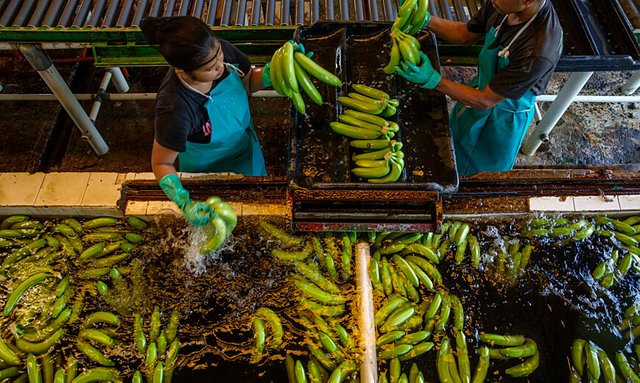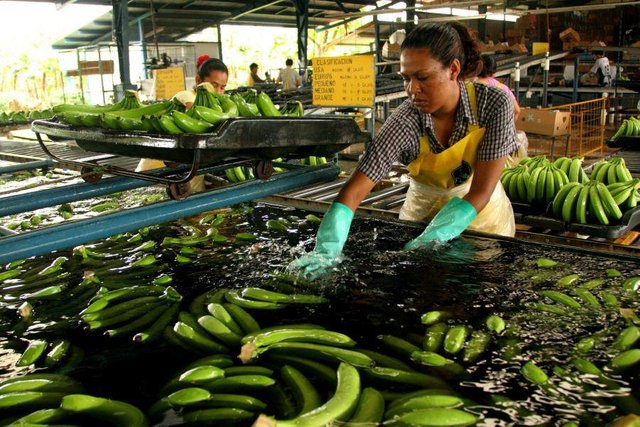The banana (Musa Paradisiaca) has its origin in Southwest Asia, although commercial cultivation began in the Canary Islands, where it was exported to the American continent and has 83% of world imports of banana, this is done in the main markets of North America, and the European Community, Japan and the former USSR, North America and the European Community with more than 60 percent of world imports, while Japan and the former USSR have almost 12 % percent.

The United States and the European Community are expected to continue to play a leading role, despite the continued decline in their share of the world market in the period, the banana plant can reach between 3 and 7 meters in height, has very large leaves in the form of spiral between 2 and 4 meters long and half a meter wide, what specialists call the flower of this plant.
The flower of this plant traders know it as the banana, these are born grouped in a hand of 3 to 20 fruits, now well within the world economy is considered the fourth most important crop in the world, in Latin America and the Caribbean are produced around 10 million tons that are consumed in the world is so, as it is considered that its cultivation is an important source of employment and income for these areas of the world. Bananas and plantains are perennial crops that grow rapidly and can be harvested throughout the year. Banana plants reproduce asexually by sprouting offshoots from a subway stem.
The shoots have vigorous growth and can produce a mature bunch in less than a year. Nearly 85 percent of production comes from relatively small plots and home gardens where there are no statistics. In many developing countries, the majority of banana production is consumed or traded locally, thus playing an essential role in food security. The importance of bananas as a food crop in tropical areas cannot be underestimated.

The cost of production has two opposing characteristics, which are sometimes not well understood in developing countries. The first is that to produce goods one must spend; this means generating a cost. The second characteristic is that costs should be kept as low as possible and unnecessary costs eliminated. This does not mean cutting or eliminating costs indiscriminately.